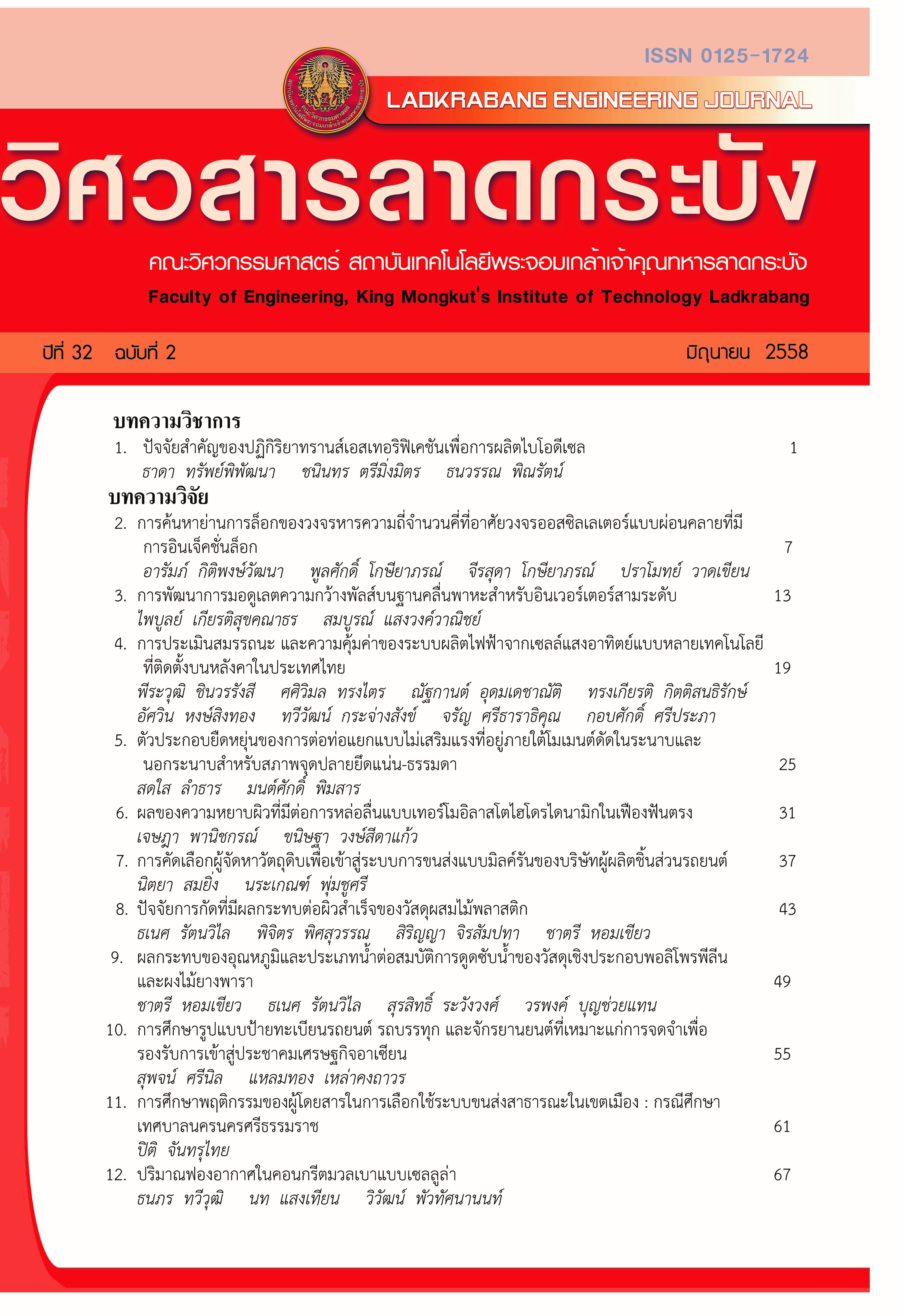Influence of Milling Factors on Surface Finish of Wood–Plastic Composites
Abstract
The effect of milling factors including spindle speed, feed, and depth of cut influenced on the surface finish of wood-plastic composites (WPCs) was investigated. The experiments were carried out on a vertical milling machine with fly cutter end mill, ECMP handle, and carbide tool. The experiments were found all factors significantly affected the surface finish. An increase of parameter levels in each factor contributed the clear increasing value of surface finish. The interaction between factors also significantly affected the surface finish. Analysis of regression model revealed that depth of cut was the most effect on surface finish. The mean absolute percentage error of surface finish between experiment and prediction was 4.04%. Therefore, the regression model can be effectively applied in WPCs industries.
References
[2] T. Arlai, P. Kaewtatip, K. Prommul, “Influence of factors in cutting of rubberwood using tungsten carbide”, Proceedings of the 17th Conference of the Mechanical Engineering Network of Thailand, 2003 Oct 15-17, Prachinburi, Thailand.
[3] R. Supasit, and S. Siripen, “An Investigation of the Effect of Cutting Parameters on Surface Quality and Tool Wear in Parawood Machining Process”, Proceedings of the 18th Conference of the Mechanical Engineering Network of Thailand; 2004 Oct 18-20; Khonkaen, Thailand.
[4] M. Y. Wang and H. Y. Chang, “Experimental study of surface roughness in slot end milling AL2014-T6”, International Journal of Machine Tools and Manufacturing, vol. 44(1), pp. 51–57, 2004.
[5] P.M. Smith and M. P. Wolcott, “Opportunities for wood/natural fiber-plastic composites (WPCs) in residential and industrial applications”, Forest Products Journal, vol. 56(3), pp. 4-11, 2006.
[6] D. C. Montgomery, “Design and analysis of experiments”, 7th ed. John Wiley & Sons, Inc.; 2009.
[7] K. V. B. S. Kalyan Kumar and S. K. Choudhury, “Investigation of tool wear and cutting force in cryogenic machining using design of experiments”, Journal of Materials Processing Technology, vol. 203, pp. 95–101, 2008.
[8] D. I. Lalwani, N. K. Mehta, P. K. Jain, “Experimental investigations of cutting parameters influence on cutting forces and surface roughness in finish hard turning of MDN250 steel”, Journal of Materials Processing Technology, vol. 206, pp. 167-179, 2008.
Downloads
Published
How to Cite
Issue
Section
License
The published articles are copyrighted by the School of Engineering, King Mongkut's Institute of Technology Ladkrabang.
The statements contained in each article in this academic journal are the personal opinions of each author and are not related to King Mongkut's Institute of Technology Ladkrabang and other faculty members in the institute.
Responsibility for all elements of each article belongs to each author; If there are any mistakes, each author is solely responsible for his own articles.






